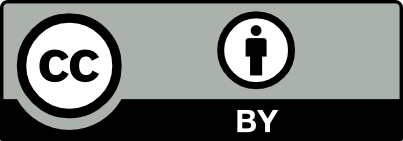Showing 3 results for Arzanlou
Mohammad Hosein Afsarian, Tahereh Shokohi, Mehdi Arzanlou, Mehdi Taheri Sarvtin, Hamid Badali,
Volume 22, Issue 92 (8-2012)
Abstract
Melanized fungi are frequently considered as ubiquitous saprobes commonly found on decomposing plant debris, dead plant material, rotten wood, or soil. Over 70 genera and 150 species of dematiaceous fungi have been implicated in human and animal diseases. The clinical syndromes
caused by latter fungi are differentiated based on histologic criteria into phaeohyphomycetoma, chromoblastomycosis, and phaeohyphomycosis. Phaeohyphomycosis is a term generally reserved for the remainder of clinical disorder due to black yeast like fungi and relatives. The most important clinical melanized fungi are in the order of Chaetothyriales, e.g. Cladophialophora spp, Exophiala spp, and Rhinocladiella spp. Standard conventional diagnostic procedures are direct microscopy, histopathological staining to document tissue invasion, radiographic and computerized tomography (CT) findings. Recently, assays have focused on non-culture based methods, especially nucleic acid-based methods, such as PCR assays. Most of the invasive infections due to dematiaceous fungi are treated by triazole antifungals, e.g. voriconazole, itraconazole and posaconazole which demonstrated the highest in vitro activity against dematiaceous fungi.
Zhila Fahim, Mohsen Arzanlou, Hamed Imani Rad, Somayeh Hekmatfar,
Volume 31, Issue 202 (11-2021)
Abstract
Background and purpose: Secondary caries is one of the main causes for replacement of dental restorations. Glass ionomer cement (GIC) has cariostatic properties and antibacterial effect due to the ability to release fluoride. The aim of this study was to compare the antibacterial activity and fluoride release between three different formulations of GIC.
Materials and methods: This experimental study was conducted in Ardabil Dental School, Iran 2020. We evaluated fluoride release (n=15) and antibacterial activity (n=24) of three GICs including Fuji IX GP Extra, Fuji II LC, and Equia Forte against Streptococcus mutans and Lactobacillus acidophilus. Microtubes containing each bacterium and no glass ionomer were considered as positive controls. Antibacterial activity was studied using well diffusion test and time-kill curve was measured. The amount of released fluoride was measured at days 1, 2, 3, 4, 7, 14, and 21 by specific fluoride electrode. Data were analyzed applying ANOVA, post hoc Sidak, and Tukey test.
Results: Fuji IX GP Extra and Equia Forte showed significantly higher and lower antibacterial activity against both strains, respectively (P<0.001). The least fluoride release was associated with Equia Forte (P<0.001), but Fuji IX GP Extra and Fuji II LC did not show any significant difference (P>0.05).
Conclusion: Fuji IX GP Extra had the greatest growth-inhibitory effect on Streptococcus mutans and Lactobacillus acidophilus due to the highest fluoride release.
Shadiyeh Molaee, Reza Mohammadzadeh, Mohsen Arzanlou, Hamed Zandian, Navid Babaei, Armita Mowlaei,
Volume 32, Issue 218 (3-2023)
Abstract
Background and purpose: Antibacterial properties of restorative materials are of great advantage as they control the progression of tooth decay. The use of self-adhesive composite materials has some benefits such as easier application and reduced treatment time. Because the antibacterial properties of restorative materials can play an important role in preventing secondary decay, especially in cervical restorations, this study was designed to evaluate the in vitro antibacterial activity of self-adhesive flowable composite against Streptococcus mutans.
Materials and methods: An in vitro study was performed using 9 discs for each composite and glass ionomer group. The discs were prepared in three groups: micro-hybrid flowable composite samples, self-adhesive flowable composite samples, and self-curing glass ionomer samples. Direct contact test was used to compare the antibacterial properties of the discs. Data collection was done by direct contact test and visual counting of grown bacterial colonies. Data were recorded in a checklist developed according to the objectives of the study and analyzed using One-way ANOVA and Independent T-test in SPSS V22.
Results: Findings showed that the antibacterial effect of glass ionomer was greater than that of flowable micro-hybrid composite and self-adhesive flowable composite. Also, a significant difference was observed between the antimicrobial activity of flowable microhybrid composite and self-adhesive flowable composite against Streptococcus mutans (P<0.05).
Conclusion: Glass ionomer and self-adhesive composite have a higher antibacterial effect against Streptococcus mutans, so they can be used as alternatives to treat tooth decay



